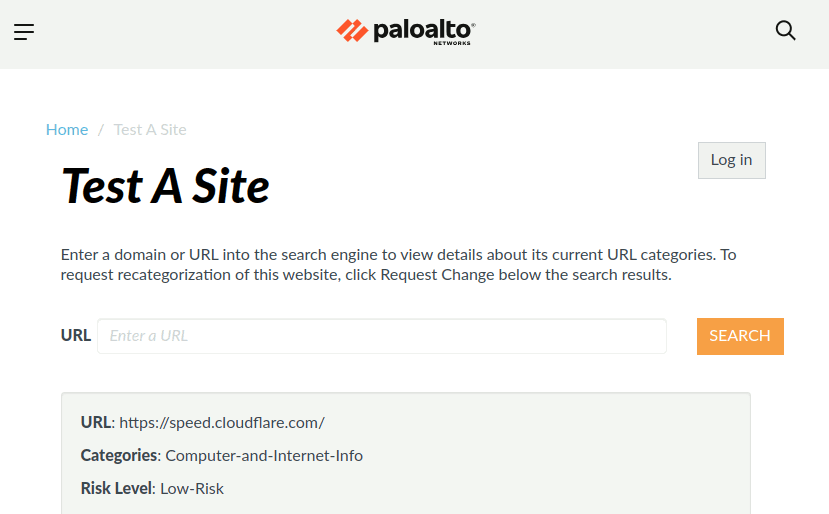TL;DR
All speed tests tested with Palo Alto Networks URL filtering have the risk level: Low-Risk.
Contents
Introduction
Safety is the end result of all security and privacy measures. It is therefore a derivative, but not unimportant, feature of any website, including online speed tests.
This is one of many tests we run to get an idea of the safety of speed tests.
Method of measurement
For this test we visit the homepage of the speed test and check the safety with Palo Alto Networks URL filtering.
Speed tests to test
Because this is a relative simple test, all speed test used in earlier tests (the unique speed tests as collected at ZOMDir) will be tested.
Due to the subject we also test TestMyInternetSpeed. This is a crappy website which, under the guise of -we offer a speed test- only wants to obtain as many page views as possible.
The measurements
- Astound speedtest Low-Risk
- Bandwidth Place Low-Risk
- Bredbandskollen Low-Risk
- Broadband Speed Checker Low-Risk
- Cloudflare Low-Risk
- Comparitech Low-Risk
- DSLReports Low-Risk
- Fast Low-Risk
- Fireprobe Low-Risk
- Google Fiber Low-Risk
- Internet Speed at a Glance Low-Risk
- LibreSpeed Low-Risk
- M-Lab Low-Risk
- Meter.net Low-Risk
- N Perf Low-Risk
- Ookla Speedtest Low-Risk
- Open Speed Test Low-Risk
- SamKnows Low-Risk
- SpeedCheck Low-Risk
- SpeedOf.me Low-Risk
- SpeedOf.me API Sample Page Low-Risk
- SpeedSmart Low-Risk
- Speedtest4.PHP Low-Risk
- TestMyInternetSpeed Low-Risk
- TestMy.net Low-Risk
- Toast Low-Risk
- Which Broadband Speed Test Low-Risk
- Xfinity xFi Speed Test Low-Risk
Some examples
An example of test results is shown below.

Conclusions
All speed tests tested with Palo Alto Networks URL filtering have the risk level: Low-Risk.
The definition of Low-Risk is: Any site that is not High Risk or Medium Risk. This includes sites that were previously confirmed as malicious but have displayed benign activity for at least 90 days.